It is my great pleasure to host on this blog the article which my friend, Nils Arne Pedersen (Aarhus University), wrote together with John Møller Larsen (Aarhus University) concerning the newly (re)discovered Manichaean fragments in Syriac. – A.S.
Recently we have published a monograph containing our edition and translation of a number of Syriac fragments in Manichaean script, together with studies of the palaeography of the Manichaean script (by Larsen) and the possible contents of the fragmentary texts (by Pedersen). The monograph also contains an art-historical study of the so-called Mani Seal by Dr Zsuzsanna Gulácsi and an account of the conservation of the Berlin fragments by Mrs. Myriam Krutzsch: Manichaean Texts in Syriac: First Editions, New Editions and Studies, Turnhout: Brepols 2013.
Since the fragments from the Berlin and Heidelberg papyrus collections have never been edited before, they have remained unknown to most scholars. The Allberry fragments had been partly edited, but later disappeared. It therefore makes sense to tell about their rediscovery, but firstly some background information.
The background story
Manichaeism was a religious movement founded by Mani who called himself “the apostle of Jesus Christ” and who lived in present-day Iraq from 216 to c. 277 AD. Mani’s writings were written in Syriac, except for the Middle Persian Šābuhragān. The eager Manichaean missionaries reached both the Atlantic Ocean and China, and Manichaeism existed for more than 1.000 years. Though an extinct movement today, the importance of Manichaean studies follows from the Manichaean interaction with other religions and cultures; for instance, the important Latin Church Father, Augustine of Hippo, had himself been a Manichaean and devoted a large part of his writings to their refutation.
During the 20th century numerous Manichaean manuscripts were unearthed. The German Turfan expeditions from 1902-1914 discovered Manichaean texts in Middle and New Persian, Parthian, Sogdian, Bactrian, Tocharian, and Uygur in the Turfan Oasis in the Xinjiang region of Western China. Most of them were written in a form of Aramaic script, deciphered in 1904 by F.W.K. Müller (1863-1930), Curator of the East Asian section of the Ethnological Museum in Berlin, and soon to be called ‘Manichaean script’. They were, however, not in Syriac, the original language of Mani.
The very same year, 1904, the two famous British ‘papyrus hunters’ Bernard Grenfell and Arthur Hunt discovered some Syriac papyrus fragments at Oxyrhynchus in Egypt, and it was soon etablished they also were written in Manichaean script. They now belong to the Bodleian Library and were firstly edited by the Oxford orientalist David Samuel Margoliouth in 1915. A few years later, in 1919, the well-known Coptic scholar Walter Ewing Crum wrote a small article about a parchment fragment in the British Museum (now in the British Library), which was also in Syriac language and Manichaean script, and which Crum believed stemmed from Ashmunain in Egypt.
The next major step in the research history of Syriac-Manichaean fragments was the publication in 1925 by Francis Crawford Burkitt (1864-1935; Professor of Divinity in Cambridge) of his book The Religion of the Manichees, containing an appendix with a reedition of the Oxyrhynchus fragments; a first edition of the Ashmunain fragment; and, furthermore, a partial first edition of “five tiny vellum scraps belonging to Mr W.E. Crum” that seemed to have been used to bind some ancient Coptic manuscripts.
Burkitt’s edition was a landmark and almost 70 more years passed before new fragments of Syriac literary texts in Manichaean script were found. Soon the importance of the tiny Syriac fragments was overshadowed by the amazing find in 1929 of the seven Coptic-Manichaean papyrus codices from Medinet Madi, the edition of which is still going on. One of the scholars working on these codices was Charles Allberry, a brilliant young scholar from Cambridge who published the second part of the Manichaean Psalm Book in 1938. Allberry’s work with the Psalm Book was, however, discontinued by the Second World War when he joined the Royal Air Force and was killed in action near Nederweert in Holland in 1943.
After the war there were few additions to the small collection of Syriac-Manichaean texts. A Syriac inscription in Manichaean script on a rock crystal gemstone, “Mani, the Apostle of Jesus Christ” (the Mani Seal) was published in 1945. Only in the 1990s followed the Syriac-Manichaean texts on wooden boards and papyri from Kellis in the Dakhleh Oasis in Egypt.
Rediscovery of the fragments
A random conversation at a lunch in a canteen at the University of Copenhagen in 1988 eventually lead to a significant increase in the small corpus of edited Syriac-Manichaean fragments. At the time Werner Sundermann (1935-2012) from the Berlin Turfan Collection was in Copenhagen to present his good friend, Jes Peter Asmussen (1928-2002; professor in Iranian Philology) with a Festschrift. During the lunch Sundermann told Pedersen that he had just identified some fragments in the Berlin Papyrus Collection as Syriac written in Manichaean script. Sundermann said that it was a sensation and that he was intended to make an edition of them. Pedersen remembered this, and many years later he started working with these fragments, encouraged by Sundermann. It turned out that the fragments had in fact been found by the conservator, Myriam Krutzsch, in the 1970s, in a cardboard box with no inventory number or information about their acquisition. It was Mrs. Krutzsch who had contacted Sundermann in order to have the script and language identified.
While preparing his work with these fragments Pedersen read an article “Syriaca” (Archiv für Papyrusforschung 1998) by William M. Brashear (1947-2000), which in a footnote referred to the existence of a Syriac fragment in Manichaean script in the Heidelberg Papyrus Collection. This increase in the number of such fragments induced us to include the Mani Seal and Burkitt’s fragments in a new large scale edition of most Syriac-Manichaean fragments (only leaving out the Kellis fragments, which had been edited quite recently by Majella Franzmann). Photographs were acquired of the Mani Seal, the Oxyrhynchus fragments, and the Ashmunain fragment, but it now turned out that nobody knew what had happened to the “five tiny vellum scraps” belonging to Crum.
Pedersen wrote to several persons and institutions in England in the hope that somebody knew the present whereabouts of the fragments. The search was in vain until he was suggested to have a look in Charles Allberry’s letters to Crum, where there might be a reference to them. In fact there was a letter in which Allberry confirmed that the fragments were in his possession. Subsequently Pedersen found out that they were still in the possession of Charles Allberry’s son, Mr David Allberry. David Allberry has now sold them to the Cambridge University Library, where they have been given the inventory numbers Or. 2552 and Or. 2553 and are known as ‘the Allberry fragments’.
Description of fragments and their contents
The largest amount of text is preserved on the Berlin fragments (P22364). They consist of 9 parchment fragments of which Nos. 1 and 3 and Nos. 6 and 7 can be joined. When Mrs. Krutzsch found them in the cardboard box they were joined with strings and papyrus fragments, as can be seen on the photograph. Mrs. Krutzsch has convincingly explained that the fragments were reused as support of the spine of a papyrus codex.
(Photograph by Mrs. Myriam Krutzsch 2008)
Two of the fragments have no letters but remains of drawings in several colours; obviously the manuscript was illuminated. As for the text, it is remarkable that somebody is speaking in the first singular to a group he adresses as ḥabībē, “beloved ones” and as benayyā de-šarbetā ḥ[ayyetā, “children of the l[iving] race”. If the restoration “l[iving]” is accepted, we are in fact dealing with the same address as  which according to Wolf Peter Funk is attested in one of the excerpts from Mani’s Living Gospel preserved in the Coptic Synaxeis Codex. It therefore seems probable that the Berlin fragments contained one of Mani’s own writings.
which according to Wolf Peter Funk is attested in one of the excerpts from Mani’s Living Gospel preserved in the Coptic Synaxeis Codex. It therefore seems probable that the Berlin fragments contained one of Mani’s own writings.
There are, furthermore, several interesting passages in the fragments, i.a., a reference to “the shining and victorious garment of God”; a kind of lamentation; and fragments of a narrative or narratives which unfortunately could not be identified. The Manichaean character of the texts cannot be seriously doubted, and they may well stem from Mani himself.
The Heidelberg fragment is poorly preserved; it contains, i.a., a word meaning “places”, meūnē, which is very rare in Syriac; outside some of the ancient lexica it is only attested in Ephrem the Syrian’s prose refutations of Mani and Bardaisan.
The Ashmunain and Oxyrhynchus fragments were already edited by Burkitt. Among our new readings we should mention that it is very probable that the name Vizan occurs in the Oxyrhynchus fragments. Vizan is one of the characters in the apocryphal Acts of Thomas, and thus the fragments seem to confirm that these acts were already part of the background of Syriac Manichaeism.
The Allberry fragments were only partly edited by Burkitt. They contain astronomical (or rather astrological) terms and possibly references to the Manichaean version of the story about Adam and Eve.
The script of the fragments
The increased corpus of Syriac-Manichaean fragments is also important for palaeographical reasons. While the texts discovered in Central Asia belong to the 8th century and some centuries on (the timespans differing between the different languages), it is argued that the Syriac-Manichaean fragments and the Mani Seal can be assigned to the 3rd and 4th centuries. The script is closely related to the so-called cursive Palmyrene script, but it remains uncertain how the script came to be used by the Manichaeans. Traditionally the Manichaeans have been renowned for their love of the art of book production, and the Syriac-Manichaean fragments seem to confirm this, even at this early point in the history of their religion: Certainly, some of the fragments, particularly those from Berlin, evince a highly developed calligraphy.
The script employed in the different fragments shows a considerable uniformity, but there are certain notable differences, particularly in the use of ligatures, and these differences may possibly enable us to make a relative dating of the fragments. And finally, certain peculiarities of the later Manichaean script of Central Asia, such as letters which do not form ligatures to a preceding letter, are present already in our early fragments.
The fragments are an important testimony to Manichaeism in its original Aramaic-Syriac context. It has sometimes been discussed whether Mani really wrote in Syriac or in another Eastern Aramaic variant, but the fragments are all Syriac and thus they support the view that this was Mani’s language.










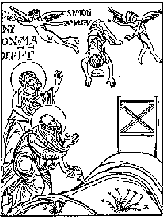




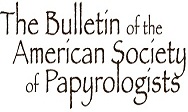
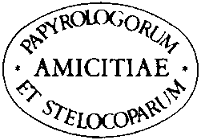
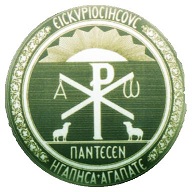





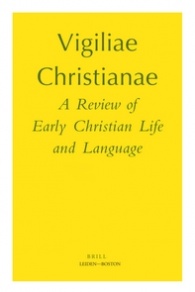






The Coptic *raite* usually means ‘family, kindred’. The Syriac, as far as I can determine from Payne-Smith, has to do with ‘generation’. I have always felt uncomfortable with ‘race’, largely because I associate it with ‘breeding’, but perhaps this is oversensitive.
The Syriac word means both “generation, genealogy” and “a family, tribe, race, nation”, if you e.g. look in Payne Smith, p. 597. So the correspondance with Coptic seems unproblematic. It is in fact also our viewpoint that this is the same expression for Manichaeans as the nâf zîndag used in Middle Persian-Manichaean texts. By choosing the translation “race” we wanted to indicate that this is an “ethnic” term used for a religious group as it was normal in Antiquity. Maybe we should have avoided “race” if this word immediately gives the connotations you feel. In that case “tribe” would be preferable since “family” seems to indicate a too small group and “nation” may be too linked with political institutions and European history.